Reducing Foodborne Illnesses

In the fast-paced world of food service, foodborne illnesses are an ever-present threat. In fact, according to the National Library of Medicine, more than 50% of foodborne illness outbreaks reported to the Centers for Disease Control and Prevention (CDC) are attributed to dining in a restaurant.
The ramifications of such occurrences extend beyond mere gastrointestinal discomfort. The Centers for Disease Control and Prevention cites foodborne illness outbreaks claiming the lives of 3,000 Americans annually. For food service operators, the financial impact of even a single foodborne illness outbreak can be devastating, costing between an estimated US$1.9 million and $2.6 million, according to the Food Quality & Safety organization.
A vulnerable food service industry
By its nature, the food service industry is vulnerable to pathogens. From local eateries to multinational restaurant chains, no establishment is immune to the potential dangers of contamination. Improperly handling and preparing food can transmit a few of the most common, potentially harmful pathogens, including Salmonella, Escherichia coli (E. coli), Listeria monocytogenes, and norovirus.
Cross-contamination, inadequate temperature control, poor personal hygiene practices, and improper surface sanitation can all be contributing factors to outbreaks of foodborne illnesses. High-profile cases often garner media attention and underscore the seriousness of such outbreaks and the need for proactive measures to ensure consumer safety.
Benefits of surface sanitation in preventing foodborne illness
Surface cleaning and sanitization are the cornerstones of food safety protocols. Through food, contaminated towels, and unwashed hands, foodborne pathogens can spread easily to prep areas, equipment, utensils, or other food. Effective sanitizing reduces the presence of potentially harmful microorganisms, rendering surfaces safe for contact with food.
Adopting a systematic approach to sanitation—including regular cleaning schedules, the use of appropriate cleaning agents, and established protocols—is essential in upholding strict hygiene standards and safeguarding public health. Only when you clean a surface properly can it be effectively sanitized. Cleaning is the removal of all organic matter—including food debris, liquids, and food residues (such as oil and grease)—from a surface. Without thorough cleaning, contaminants will remain on the surface, allowing bacteria to grow and preventing sanitizers from coming in direct contact with the surface. After cleaning the surface, apply sanitizer and ensure it remains wet for the time indicated on the manufacturer’s label to achieve sanitization.
Beyond public health benefits, comprehensive surface sanitation practices can boost a food service establishment’s reputation by fostering consumer trust and loyalty in an increasingly discerning—and competitive—marketplace. A reputation for cleanliness and hygiene enhances the perceived value of a food service establishment and serves as a potent differentiator in an industry fraught with reputational risks.
Investing in sanitizing
Proactive investment in easy-to-use surface sanitation products and systems can help create a culture of food safety consciousness among employees, empowering them with the knowledge and skills necessary to uphold rigorous hygiene standards. Choosing the proper sanitizing method and product is essential to achieving and maintaining FDA Food Code compliance.
When deciding what is best for your operation, consider ease of training and use, convenience, speed, and effectiveness. The more steps required, the higher the probability of something going wrong. Human errors (using a dirty bucket or rag, incorrectly preparing the solution, etc.) or situational circumstances (hard water, water temperature, water pH level) can cause problems with sanitizing. The typical rag and bucket method has 11 steps, while a ready-to-use wipe protocol has only three steps.
Be proactive
The prevalence of foodborne illnesses in the food service industry underscores the need for vigilance and proactive intervention in safeguarding public health. Surface sanitation is the key ingredient in this endeavor, offering a multifaceted array of benefits ranging from the prevention of cross-contamination to the preservation of brand reputation.
By prioritizing stringent sanitation protocols and fostering a culture of food safety, food service operators can reduce risks, enhance consumer confidence, and maintain the highest public health and hygiene standards.
Esperanza Carrion is the vice president and general manager of Sani Professional, the food safety division of Professional Disposables International (PDI) Inc., a global leader in infection prevention.

















